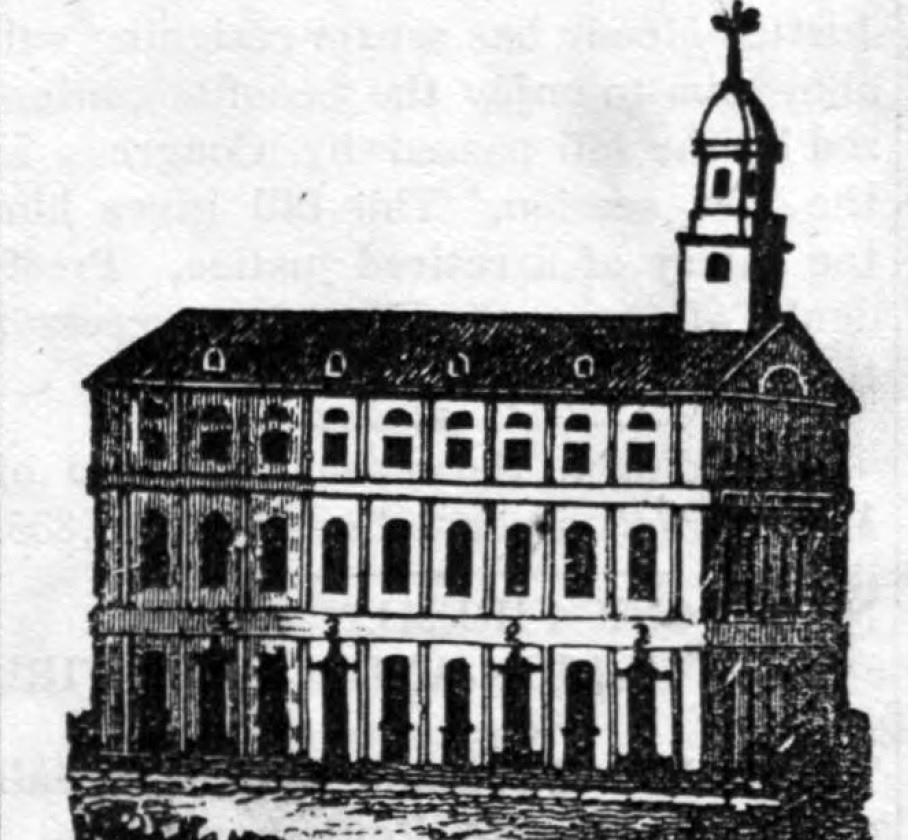by James Rada, Jr.
More Accomplishments of HARNEY UNIVERSITY
Note: This is the third in a series about the “achievements” of Harney University.
While Harney University achieved legendary status in just about every field of study in the early 1900s, things didn’t start off that way.
The faculty, which included Jacob Turner, Jerry Overholser, Daniel Shorb, Sterling Galt, and Bill Snyder, wasn’t always known for their professorial skills. However, even before Harney University became famous, the group of men who met regularly at the Slagle Hotel in Emmitsburg were showing off their storytelling skills in the pages of the Emmitsburg Chronicle and planting the seeds for the future university.
Uncle Bill’s Column seems to be the forerunner to Harney University and boasts the same mock seriousness that the university would come to use. The column, “Uncle Bill,” answered such curious questions and requests as: “Please give in, in the Aztec language, a portion of Mrs. Roosevelt’s remarks about Mr. Harriman,” and “What noted fish are found in the Hongaloonbink River?”
In a 1909 story in the Emmitsburg Chronicle, Dan Shorb, Bill Snider, Ed Brown, and Nathan Hoke added to the Frederick County legend of the snallygaster monster by recounting their encounter with the beast. The men fought with it for hours, chasing it to Carroll County. It was described as having “ghost-like wings,” bristles that stuck from its snout, and “its hide was the color of the down side of a catfish.” It could also breathe fire.
“Bill Snider says it sounded for all the world like Flat Run at high tide where the waters rush over the rocks at Whitmore’s Wharf, only more so,” the Chronicle reported. “The air was charged with some peculiar smell, rather loud too for it wakened the man in the signal tower at Dry Bridge.”
During 1910, a number of articles talked about the airship that Dan Shorb built. It was 130 feet long and 16 feet wide and carried “two auto-magneto-bi-sparking generators, a cogless centripedal concussion plane and three wireless rudders,” according to the Chronicle. It had an 87-horsepower engine, fueled with horse mint oil. Its maiden voyage was to include dignitaries who would accompany the inventors “on this, the initial, and most likely, the final trip,” according to the Chronicle.
While that flight apparently went smoothly, one that followed two months later did not. Shorb admitted there was an explosion during the flight. “He had just fed his airship and put it in his stable and was about to take the gears from his clothes’ horse when a snow burst full of robins (some of which escaped to Leitersburg) collided with the gyroscope and ignited the spaker in his silo which exploded with terrific force, and as the wind blowing in an easterly direction, it struck the fodder and carried the shock to Westminster by way of Thurmont,” according to the Chronicle.
By 1912, Shorb was beginning to be called a doctor in the newspaper, a hint at what was to come. In May, the Chronicle ran a short piece about him proclaiming that he would not run for the presidential nomination of either political party.
The following piece ran in the Chronicle in September 1912. Although it doesn’t mention any of the typical members of the Harney University faculty, it definitely has the feel of one of their stories.
“After many months of careful experimenting and the expenditure of $16,547 in real stage money, Drs. Herr Van Mueller and John E. Davidson have perfected a flying apparatus, called by them the Gyro Scutoplane. It is propelled by an eight-cylinder hexagonal engine using monkey feathers for fuel and is capable of attaining a speed of 85.6 miles a minute. A diagram and full particulars of this invention may be seen in the current issue of the Pallbearer’s Review. Decorations have been given to both the scientists and each has received a medal of the Order of the Plush Ladle, conferred by the Sultan of Slush.”
By this time, Harney University had already started being mentioned in the pages of the newspaper, and a legend was born.

The building drawing is from the Emmitsburg Chronicle and supposedly showed the Harney University Science Hall that Dr. John Culp, Professor Emeritus of the Science of Pingpongology, presented the university.
Courtesy Photo of the front of a postcard

